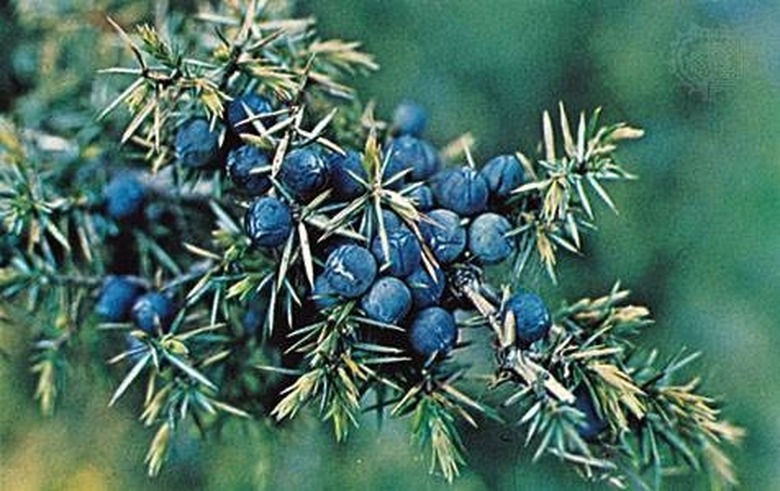How To Identify Juniper Berries
Things Needed
- Open area with plenty of sunlight
- Juniper shrub or tree
- Sticky sap
- Juniper berries
Juniper berries can be used for a variety of things, including survival food in the forest, creating gin spirits and as a delectable addition to edgy cuisine. It is important to know how to identify them from other possibly poisonous berries if you are in need of food, or if you are trying to grow a juniper plant.
Step 1
Search for open, sunny areas in the forest. Make sure they are dry areas without a lot of moisture, humidity or marshy landscape. Juniper berries grow all year round. Although they are well-known to the desert and mountainous areas, that is not the only place juniper plants grow.
Step 2
Look for a plant with berries that appear blue on it in this open sunny area. The berries are a little smaller than regular blueberries and grown at the ends of the branches. You will smell a pine aroma that is very strong as you come closer to the juniper plant. They hang in clusters.
- Juniper berries can be used for a variety of things, including survival food in the forest, creating gin spirits and as a delectable addition to edgy cuisine.
- It is important to know how to identify them from other possibly poisonous berries if you are in need of food, or if you are trying to grow a juniper plant.
Step 3
Look to see if the plant that has these berries hanging on it is a shorter bush, shrubs or tree. Remember that juniper is an evergreen that looks a bit like a cedar tree. Juniper leaves are short, no longer than two centimeters. The branches are full of theses leaves and do not extend to far from the core of the juniper plant. The leaves are thin, green and pointy. The berries should be hanging off of these leaves.
Step 4
Feel that base and branches of the juniper to look for sap. Juniper's sap is very sticky and thick, with an aroma similar to that of the berries. It is also dark-colored.
- Look to see if the plant that has these berries hanging on it is a shorter bush, shrubs or tree.
- The branches are full of theses leaves and do not extend to far from the core of the juniper plant.
Step 5
Collect the juniper berries once you have identified all these parts of the juniper plant. It is important to look for other characteristics, other than just the blue berries, to make sure that the plant is not a poisonous one in disguise.
Tip
Juniper twigs can be boiled for tea, and the berries eaten or used in sauces. Burning the branches of the juniper tree also repels bugs and insects
